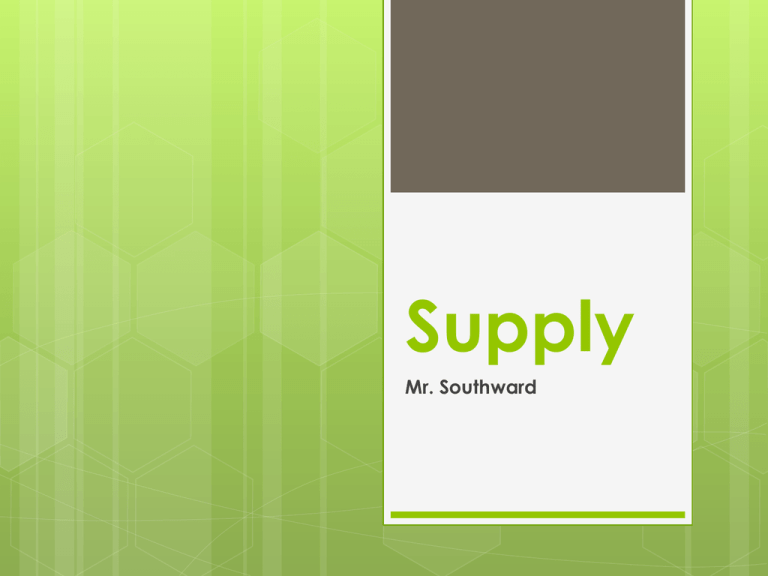Supply
advertisement

Supply Mr. Southward What is Supply? The amount of a product that would be offered for sale at all possible prices that could prevail in the market; Do not forget, this is a behavior; not a number. Supply is showing what would happen at various prices; The Law of Supply Because producers are out to make the greatest profit possible, it makes sense for them to see higher prices as a good thing. Two different ways to view Supply Supply Schedule a listing of the various quantities of a particular product supplied at all possible prices in the market Supply Curve the graphical representation of the supply schedule; The Market Supply Curve Refer to page 95, read about Individual and Market Supply Curves and explain the difference between the two. Quantity Supplied vs. Supply Think back to what we talked about with demand, grab a partner and read about the difference between a change in quantity supplied and a change in supply. Factors Causing a change in Supply (pages 104-108) Cost of Inputs Technology Subsidies and supply Excise Taxes Role of Government Rules and Regulations Changes in the Global Economy Expectations Changes in Number of Competitors Elasticity of Supply measures how firms will respond to changes in the price of a good or service >1= supply is very sensitive to changes in price and is elastic <1 = inelastic Equal % change in price = to 1= unitary Costs of Production How many workers to hire? - read the example on page 97…and…create your own scenario with a partner…*notebook grade* Marginal Product of Labor – change in output from hiring one more worker (pg. 98) Increasing Marginal Returns – specialization – increases output Diminishing Marginal Returns – specialization ends – adding more workers increases total output…but…at a decreasing rate (pg. 98) – limited capital Negative Marginal Returns – workers get in each other’s way – disruption of production – overall output decreases Production Costs Fixed Costs – does not change – rent…property taxes…salaries Variable Costs – rise or fall depending on the Q produced – reduce weekly hours for workers…cost of labor = number of workers…electricity/heating Total Cost = fixed + variable Marginal Cost – the additional cost of producing one more unit – chart on pg. 101 Setting Output Marginal Revenue and Marginal Cost Responding to Price Changes The Shutdown Decision *Explain concept and terms in your n/b…yes…it is a n/b grade*











